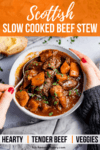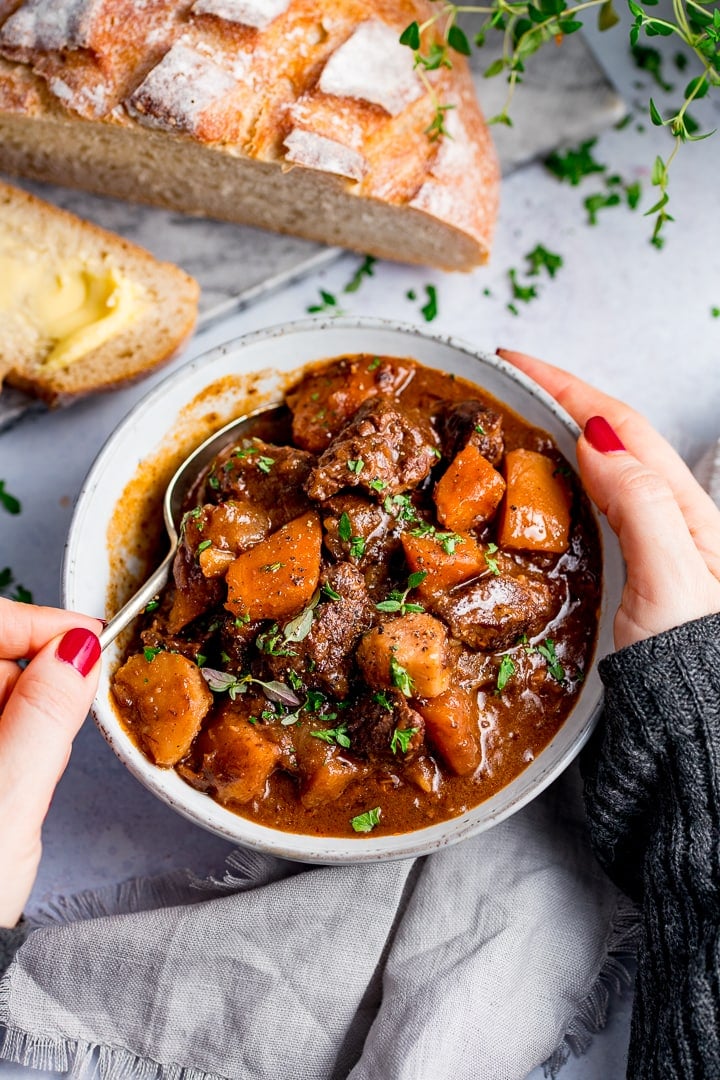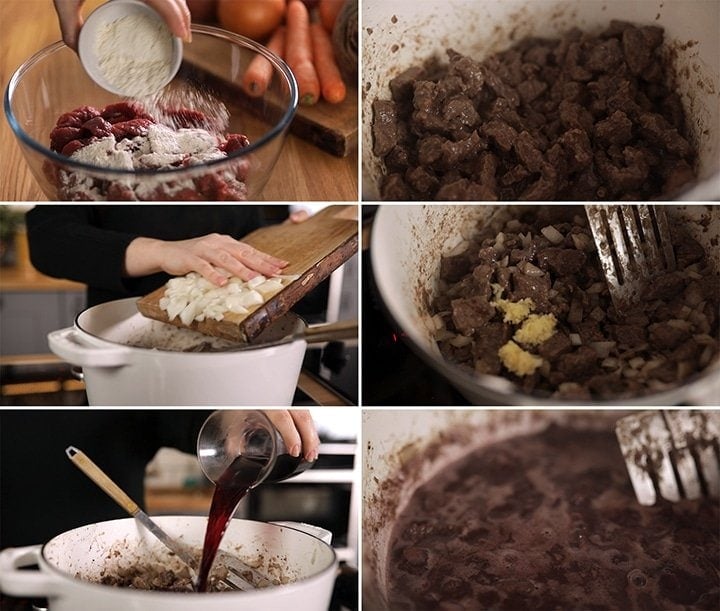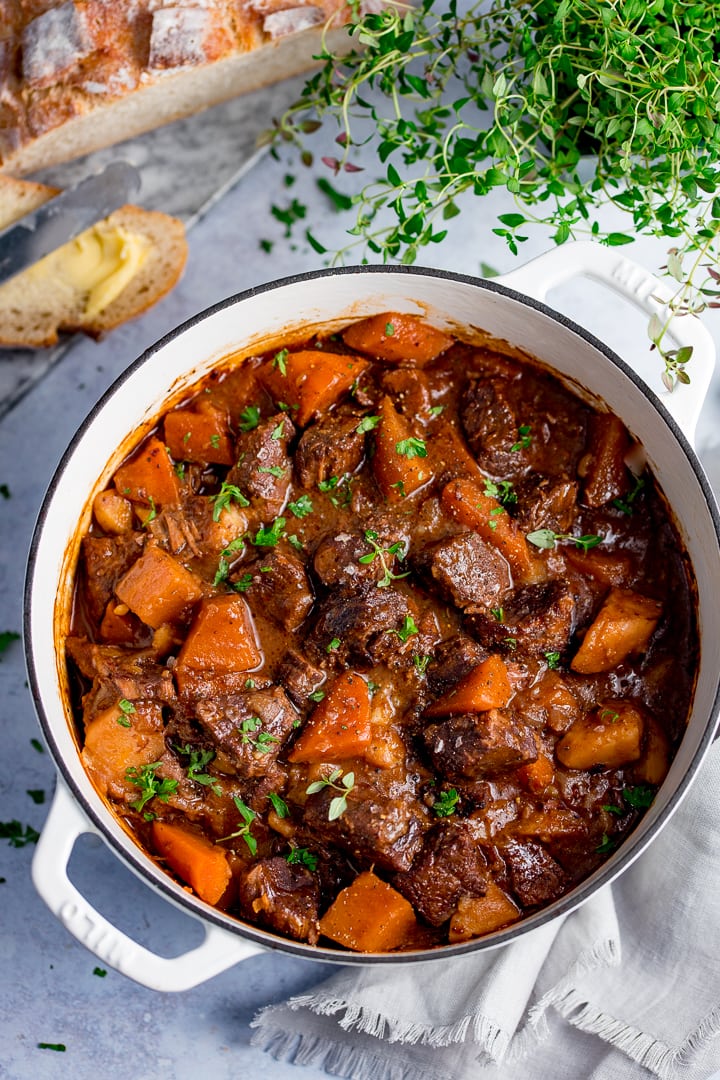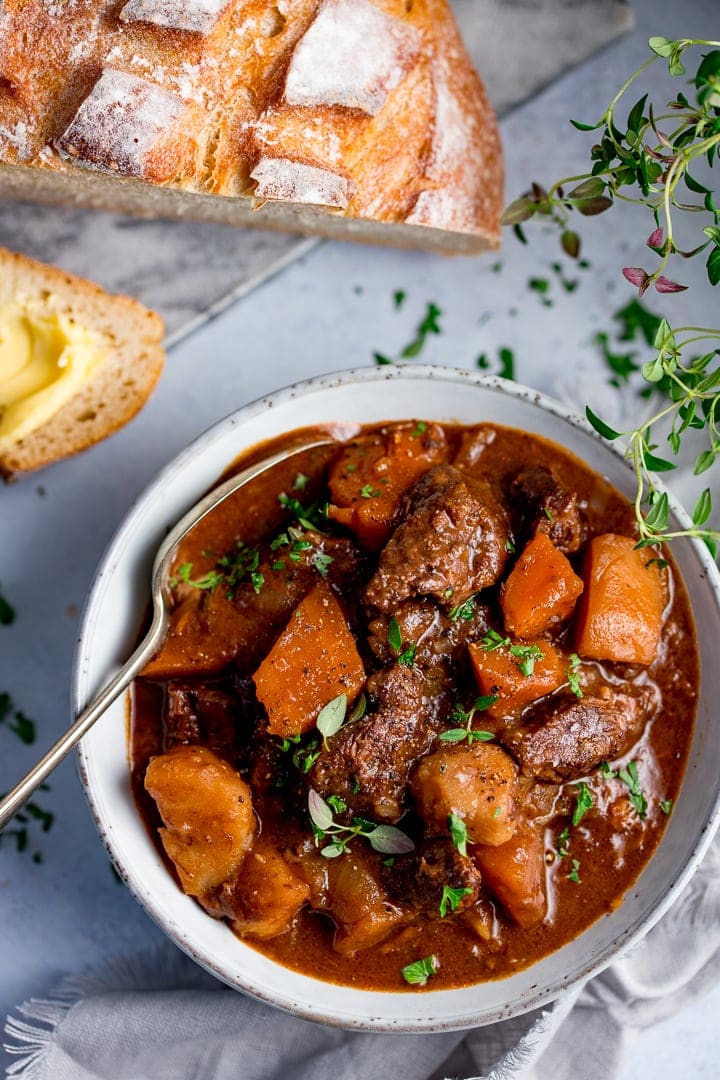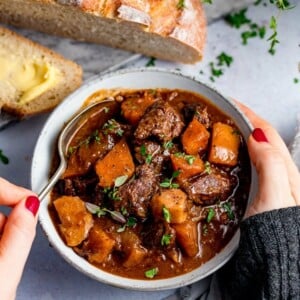If you’ve never heard of Robert Burns, you’ll no doubt have heard one of his most famous works - Auld Lang Syne. That wonderful tune we (probably slightly drunkenly) sing to say farewell to the previous year as we bring in the new year. Originally created as a poem, it wasn’t turned into a song until after his death in 1796. Burns night or Burns supper itself first became a thing 5 years after his death, with the gathering of 9 of his friends who got together to celebrate his life and works over a feast of haggis and whisky. Ok, I’m not 100% sure about the haggis and whisky thing - but that’s what I’ve heard anyway! Auld Lang Syne and Burns night are now well known the world over, and to celebrate, I’m bringing you this yummy Scottish beef stew. I’d love to have done something haggis related, but to be perfectly honest I can’t stand the stuff (sorry to all those die-hard haggis fans).So here we have it, my favourite Scottish recipe - cook it in the oven or even in the slow cooker, and make plenty!
So how to do we make it?
Dust chunks of beef in flour and fry in oil in a casserole pan until golden brown all over. Add chopped onions and cook for a further 5 minutes, then stir in the garlic, red currant jelly, and red wine and simmer for 5 minutes
Add in the carrots, potatoes, swede, stock, tomato puree, Worcestershire sauce, bay leaves, sugar, salt and pepper. Bring to the boil then place a lid on and cook in the oven for 3-4 hours until the beef is lovely and tender. Serve topped with a little fresh thyme and some freshly cut bread.
I like to make a huge batch, then serve half up as a stew, and then save the other half as a pie filling 🙂
Can I make it ahead?
Yes! you can make this stew, then cool, cover and refrigerate for up to two days. Reheat in a pan until piping hot throughout.
Can I freeze it?
Yes, any leftovers of this stew can be cooled, covered and frozen. Then defrosted overnight in the refrigerator and reheated in a pan (stirring often) or microwave until piping hot throughout.
Best type of beef for Scottish Beef Stew:
Chuck steak (braising steak) – comes from the forequarter- Consisting of parts of the neck, shoulder blade, and upper arm. It’s a tough but very flavorful cut of meat. It has a lot of connective tissue, which needs long slow cooking to break down and become tender. Cut into bite-size chunks, or you can use bigger chunks and shred the beef into strips. Silverside (bottom round) – comes from the hindquarter – just above the back leg It’s a leaner, inexpensive cut of meat with little marbling. The lack of fat means it doesn’t have as much flavour as chuck steak, so make sure you use good quality stock (as well as the wine) to cook it in. It’s good for slow cooking, but must be cooked with moisture/liquid so doesn’t dry out and become tough.
What to serve with Scottish Beef Stew:
I like to serve mine with creamy mashed potatoes or crispy roast potatoes and some greens - such as steamed kale or green beans.
The Scottish Beef Stew Video:
The Scottish Beef Stew Recipe:
This recipe was first published in January 2016. Updated in December 2019 with new photos, tips and video. Some of the links in this post may be affiliate links – which means if you buy the product I get a small commission (at no extra cost to you). If you do buy, then thank you! That’s what helps us to keep Kitchen Sanctuary running. The nutritional information provided is approximate and can vary depending on several factors. For more information please see our Terms & Conditions.


